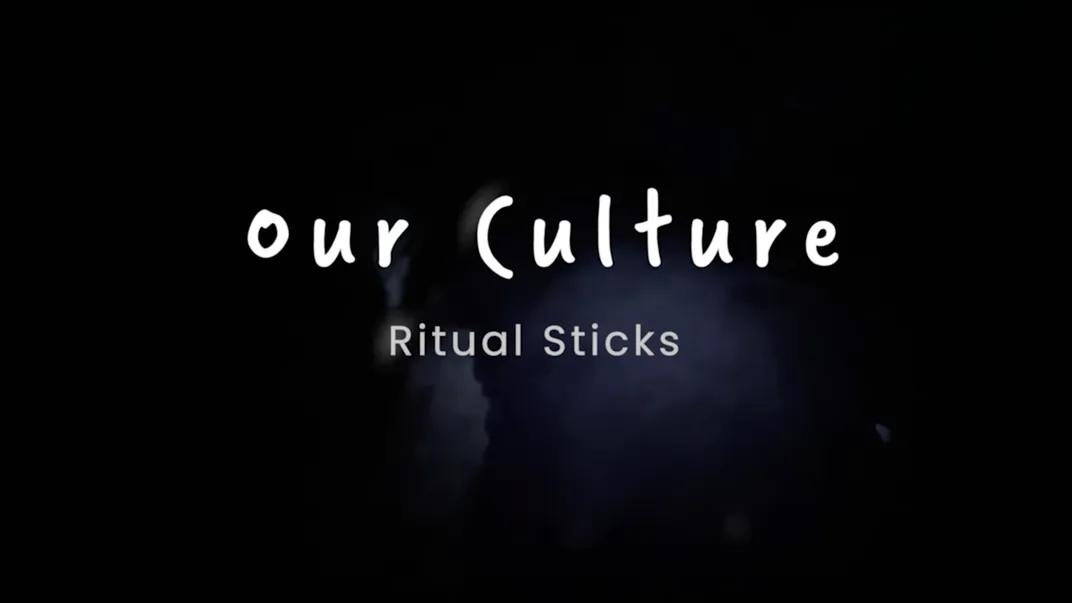Sticks Discovered in Australian Cave Shed New Light on an Aboriginal Ritual Passed Down for 12,000 Years
Both Western analyses and traditional Aboriginal knowledge helped the research team learn about a cultural practice dating to the last ice age
:focal(479x324:480x325)/https://tf-cmsv2-smithsonianmag-media.s3.amazonaws.com/filer_public/50/2d/502ddbdd-191f-4d2b-9655-53a207c5f809/australia3.png)
The remains of two wooden sticks, partially burned and smeared with fat, were unearthed by archaeologists in 2020 deep within an Australian cave, in an area of Gunaikurnai Country, named for the Aboriginal community that continues to be the lands’ Traditional Custodians.
Now, a new paper published last week in the journal Nature Human Behavior puts this discovery into context using traditional knowledge and historic accounts—and it suggests the artifacts are evidence of one of the world’s oldest known cultural rituals, practiced by Gunaikurnai communities.
The sticks, made of Casuarina wood, were found in two miniature fireplaces in Cloggs Cave in southeastern Australia. One is 11,000 years old and roughly eight inches long, while the other dates to 12,000 years ago and measures nearly 16 inches long. Both were studied and analyzed by a research team that included archaeologists and local Indigenous community members, bringing new understanding to Gunaikurnai ritual spells.
“[The research tells] a broader story about our people, our belief systems, our traditions, and it’s important to share that,” Gunaikurnai Elder Uncle Russell Mullett, a co-author of the study and a cultural researcher with the Gunaikurnai Land and Waters Aboriginal Corporation, tells the Australian Broadcasting Corporation’s Belinda Smith. “It’s all about experience from the deep past to the present and into the future.”
Inside Cloggs Cave, as in other caves nearby, mulla-mullungs—medicine men and women who belonged to particular clans and were both respected and feared—used the sticks to perform rituals. These ceremonies aimed to either cure individuals within the clan or bring about harm to others, depending on the occasion.
As part of the rituals, the sticks, called murrawan, were prepared and shaped, covered with animal or human fat and stuck into the ground near a fire at a slanted angle, until they fell down.
One early written account of this ceremony dates to 1886, when anthropologist Alfred Howitt recorded his observations after closely studying Indigenous cultural practices throughout southeastern Australia. He described how something belonging to the subject of the spell—such as hair, feces, saliva or clothing—would be fastened to the prepared stick.
“The wizard [mulla-mullung] has during this time been singing his charm; as it is usually expressed, he ‘sings the man’s name,’ and when the stick falls the charm is complete. The practice still exists,” Howitt wrote at the time.
The team estimates the ritual was practiced in Gunaikurnai Country for more than 500 generations.
Historical written accounts, traditional knowledge and archaeological evidence all came together for this study, making it stand out to researchers. “Often when we’re trying to understand past ritual practices, we may only have one of those strands of evidence available to us,” Caroline Spry, an archaeologist at La Trobe University in Australia who was not involved with the work, tells the Australian Broadcasting Corporation. “But in this case, it’s possible to weave together multiple strands of evidence that all match.”
/https://tf-cmsv2-smithsonianmag-media.s3.amazonaws.com/filer_public/49/f2/49f27452-a4c1-4d6c-8992-64784497a88a/australia1.webp)
Not every study of these sites and rituals was conducted with care. In the 1970s, archaeological excavations of Cloggs Cave proceeded without permission from the Gunaikurnai people. Findings at the time reduced the communities’ usage of caves to shelter and eating, which “missed key cultural dimensions,” per a statement from Monash University. These conclusions have largely been recontextualized with the team’s new research.
“The cave was never used as a general camping place, but rather only for special ritual purposes,” Bruno David, the study’s first author and an archaeologist at Monash University, tells Live Science’s Kristina Killgrove. “It first began to be used this way around 25,000 years ago and continued to be used this way until at least 1,600 years ago.”
Wooden objects are hardly ever preserved for so long, and they’re rarely kept in such good condition. But these sticks were quickly buried in soil that was slightly alkaline and very dry, which contributed to their longevity. The team even found leaves, also well-preserved, within the cave floor.
The two sticks are the oldest wooden artifacts on record found in Australia, per the paper. No other cultural ritual in the world has physical evidence dating to so long ago.
“This kind of research, it’s cultural research, so it’s got to be based on trust, on understanding and respect and mutual learning as well,” Mullett says in the statement. “The cultural lens of it is the important part. Yes, we can talk about science and write science papers, but it’s the actual culture, what was happening here and what was going on, that’s the big story.”
/https://tf-cmsv2-smithsonianmag-media.s3.amazonaws.com/accounts/headshot/ChristianThorsberg_Headshot.png)


/https://tf-cmsv2-smithsonianmag-media.s3.amazonaws.com/accounts/headshot/ChristianThorsberg_Headshot.png)